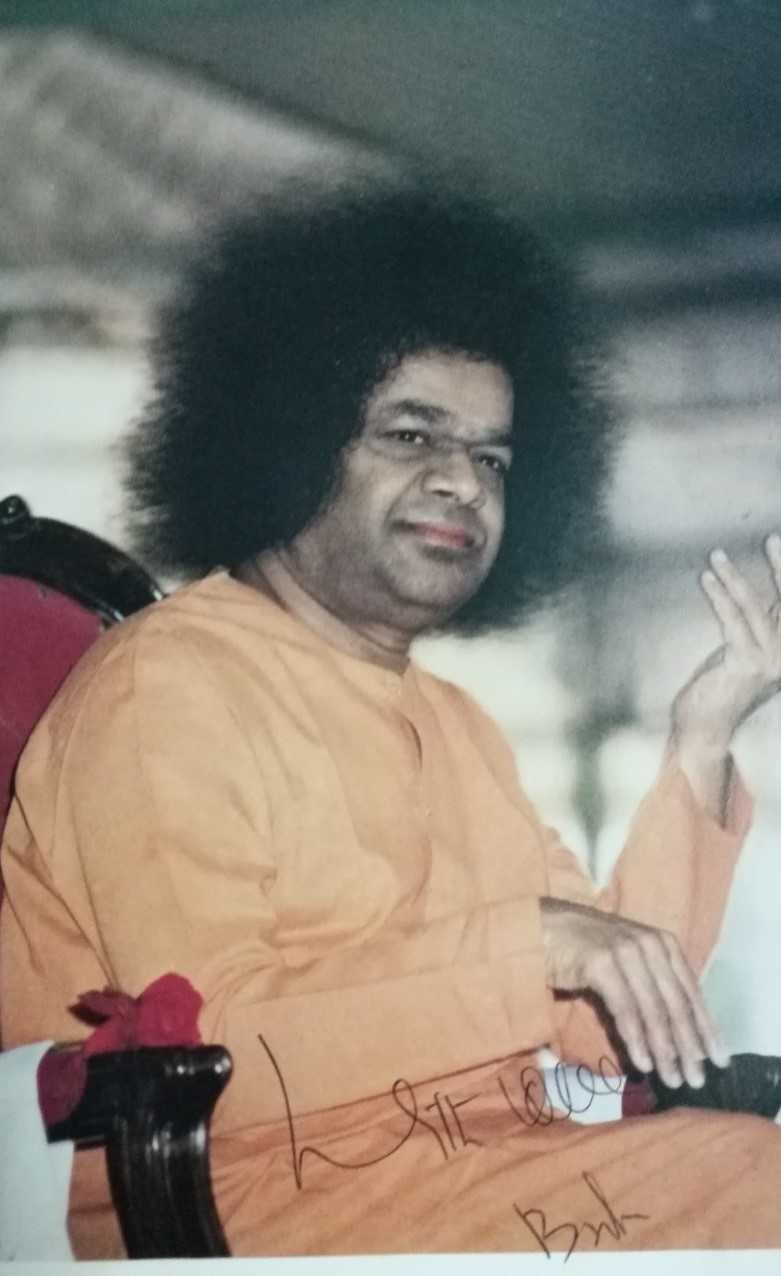The world is full of powerful men, men endowed with wealth, great scholars and men with good qualities, but there are few who have realised the Atma (the Omni-Self). The body is visible. The mind appears to exist. But the Atma (the Spirit) is not visible. The Atmavan (Self-realised person) is one who has recognised the visible Spirit, who is immersed in the bliss of that awareness and who is intoxicated by that Divine experience. In ancient times, many sages experienced the potency, the sweetness and the ineffable joy of this Divine bliss and gave the fruits of their experience to the world. They codified the knowledge contained in the Upanishads and offered it to the people in the world in the concept of Trikonam (Triangle). The Body is one side of the triangle. The second side is the mind. The third is the Atma.
The body is gross. The Atma is subtle. The mind coordinates the gross body and the subtle Atma and makes the individual experience Ananda (bliss). (SSS Vol.24)
The concept of Triangle was explored from another point of view, namely, the Jiva (the individual), God and Nature (or the phenomenal universe, Prakriti). The essential nature of these three was described in the terms: Rakti, Bhukti, Mukti’. ‘Rakti’ represents the cosmos. ‘Bhukti’ (enjoyment) represents the body (which seeks enjoyment). Atma represents ‘Mukti’(liberation). The Upanishadic declaration points out that these three are essential for every human being. Another triad that has to be noted consists of ‘Sthula’ (gross), Sukshma (subtle) and Karana (causal) bodies. Another triple concept contained in the Upanishadic aphorism is that of ‘Past, Present and the Future’ (the triple aspects of Time). In these different ways, the sages sought to popularise the idea of oneness of body, mind and Atma. (SSS Vol.24)
Man s purity is manifest when human relations are based on heart to heart and love to love. Love has a form of a triangle with three arms. Prema (divine love) does not seek any return. Where an individual offers love in expectation of a return, fear overtakes him. The one who loves with no expectation of any return is totally free from fear. Love knows only to give, not to receive. Such a love is free from fear. For true love, love is its own reward. Thus, love seeks no return, is free from fear and is its own reward. These are the basic features of true love. (SSS Vol.21)
There are three sides to love forming a triangle. They are: (1) Love gives and never receives; (2) Love is fearless; (3) Love is changeless. (SSS Vol. 26)
